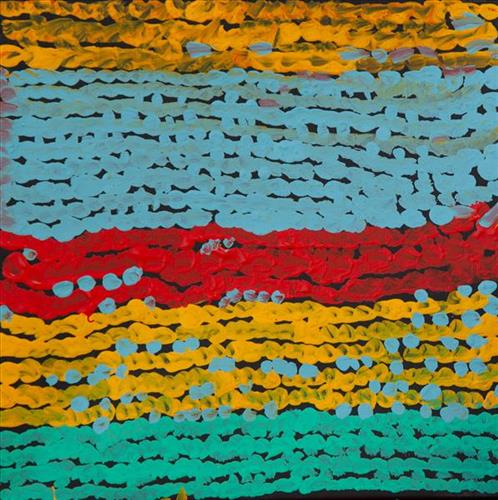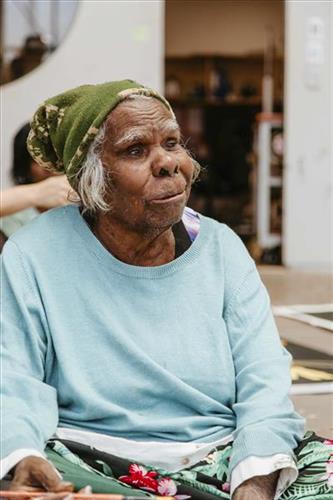111582255280
Wawul
Wawul is a spring located yulparirra (south) of Punmu Aboriginal Community, and at the southern end of Nyayartakujarra (Lake Dora), a large salt lake surrounded by tali (sand hills) and numerous springs within the Karlamilyi (Rudall River) region. Other nearby water sources include Tarl, Kartuny, Wawul, Warnkarr, Jutupa, and Kunalimpi.
Wawul lies within Mayiwalku’s ngurra (home Country, camp), and formed part of the region she traversed extensively during the pujiman (traditional, desert dwelling) era. Mayiwalku recollects staying here as a child with her two sisters, Nyanjilpayi (Ngarnjapayi) Nancy Chapman and Mulyatingki Marney, her brother, father and three mothers.
During the pujiman period, Martu would traverse very large distances annually in small family groups, moving seasonally from water source to water source, and hunting and gathering bush tucker as they went. At this time knowledge of water sources was critical for survival, and today Martu Country is still defined in terms of the location and type of water. Each of the hundreds of claypans, rockholes, waterholes, soaks and springs found in the Martu desert homelands is known by name, location, quality and seasonal availability through real life experience and the recounting of Jukurrpa (Dreaming) narratives.




